Click on images to enlarge
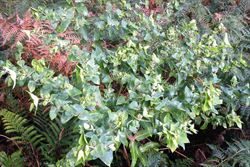
habit (Photo: Greg Jordan)

habit prior to flowering (Photo: Greg Jordan)
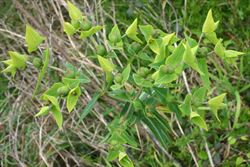
habit in fruit (Photo: Trevor James)
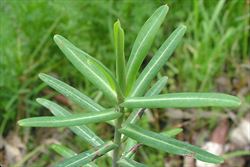
elongated lower leaves (Photo: Sheldon Navie)

broader upper leaves (Photo: Sheldon Navie)
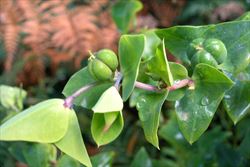
three-lobed immature fruit (Photo: Greg Jordan)
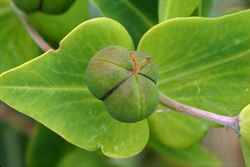
close-up of immature fruit (Photo: Trevor James)
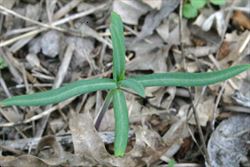
seedling (Photo: Trevor James)
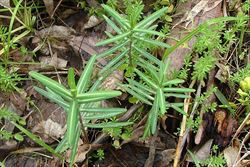
young plants (Photo: Sheldon Navie)
Scientific Name
Euphorbia lathyris L.
Synonyms
Euphorbia lathyrus L.
Family
Euphorbiaceae
Common Names
caper bush, caper spurge, caperspurge, gopher plant, gopher spurge, gopher-plant, gopherplant, mole plant, mole weed, moleplant, myrtle spurge, spring wort, spurge, wild caper
Origin
The exact native range of this species is obscure, however it is thought to have originated in southern Europe (i.e. Greece, Italy and Corsica).
Naturalised Distribution
This species is widely naturalised in southern Australia (i.e. in eastern New South Wales and the ACT, throughout Victoria and Tasmania, in the south-eastern parts of South Australia and in the coastal districts of south-western Western Australia). It is also sparingly naturalised in south-eastern Queensland and possibly naturalised in the Northern Territory.
Notes
Caper spurge (Euphorbia lathyris) is regarded as an environmental weed in Victoria, Tasmania and the ACT. It has been cultivated as a garden ornamental and has become naturalised throughout many parts of the world. In Victoria it is listed as an invasive weed of riparian shrubland and riverine escarpment shrubland plant communities. It is also on local environmental weed lists (e.g. the Mount Alexander Shire common invasive garden plants list) and is present in conservation areas in this state. For example, it is listed as a major weed species in the Brisbane Ranges National Park and has been actively controlled by community groups in Warrandyte State Park.
In Tasmania caper spurge (Euphorbia lathyris) is regarded as having the potential to dominate areas of native vegetation, and infestations of have been reported in coastal vegetation. It is also present in conservation areas in Tasmania (e.g. in the Clayton Wetlands), New South Wales (e.g. in the Nattai and Bargo Reserves and in the Broulee Island Nature Reserve) and South Australia (i.e. Aldinga Scrub Conservation Park).
Note: This species is poisonous to humans and livestock and its milky sap can cause dermatitis and eye irritation.

